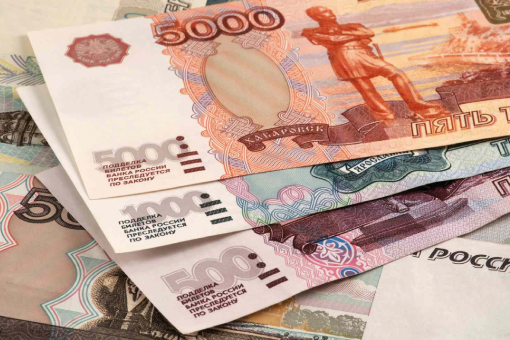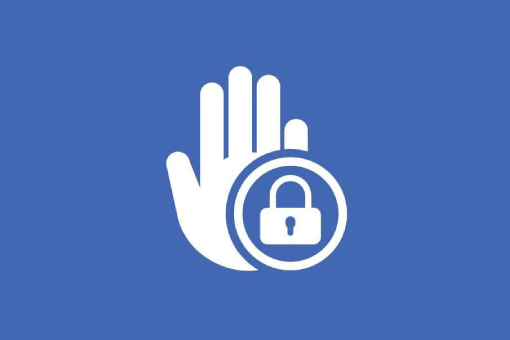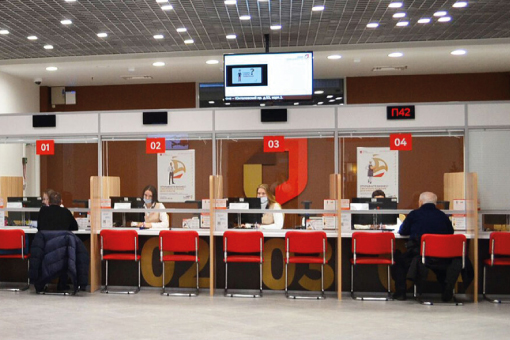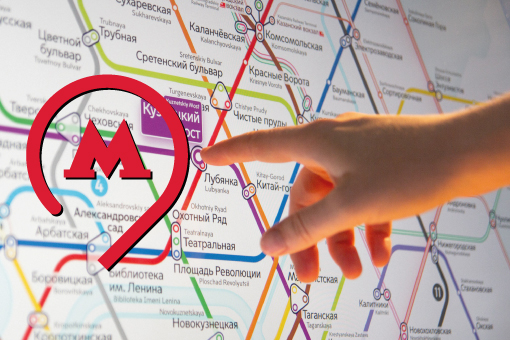
Travelling to Russia requires a bit more cash planning than your average European getaway. With international cards often blocked and a strict reliance on rubles (RUB), knowing how—and where—to handle your money is essential. Whether you’re wondering how much cash to declare at customs, where to get the best exchange rates, or what to do in an emergency, this guide covers every step. From budget estimates for different travel styles to clever ways to protect your funds, we’ll help you navigate Russia’s financial landscape with confidence. Just remember: crisp bills, discreet habits, and a backup plan are your best travel companions.
How Much Money Can I Bring?
First things first—when in Russia, you’ll need to pay in rubles. Euros, dollars, and other foreign currencies aren’t accepted as legal tender, so you’ll have to exchange your pounds, euros, or dollars either before or during your trip.
If you’re flying in, you can carry up to $10,000 (or its equivalent in euros) without declaring it. Go over that amount, and you’ll need to complete a customs declaration. It’s not against the law to bring more, but you’ll have to provide a valid reason and declare it properly.
Here’s a key point: How you enter Russia affects how much cash you can bring without hassle.
- Flying via non-EU hubs (e.g., Turkey, Serbia, Morocco): These routes are popular with Europeans because there are no cash export controls. You can carry euros or dollars in your wallet, money belt, or bag—just stay under the $10,000 threshold and use common sense.
- Crossing by land from an EU country (e.g., Estonia, Latvia, Poland): The EU bans exporting euros to Russia, so border guards might check your luggage and limit how much you can carry. Some travellers report being allowed only €300 for a 4–5 day trip (roughly €60–70 per day) at the Estonian border, with the money returned on exit at the same border point.
If you’re taking this route, you could exchange all your euros for rubles before crossing—but expect worse rates than in Russia.
Should You Exchange Money Before Travelling?
It’s wise to bring some rubles from home to cover your first expenses after landing—think taxis, meals, or metro fares. Around €50–100 worth should suffice. But don’t go overboard: exchange rates outside Russia are usually terrible, so only change what you’ll need immediately.
In the EU, you can get rubles at certain banks or specialist exchange offices. Some let you order online and collect in person, or even deliver to your home. Just plan ahead—they rarely keep rubles on hand without prior notice.
For travellers from the US, it’s trickier. A few banks or online services offer rubles, but expect steeper fees.
Pro tip: Before you leave, use your foreign card to pay for as much as possible—flights, trains, and especially accommodation. Websites like ZenHotels (for prepaid hotels) and Russiantrain (for train tickets) accept international cards, reducing how much cash you’ll need to carry.
Where Should You Exchange Money in Russia?
Once you’ve arrived in Moscow or St. Petersburg, the easiest way to get rubles is by exchanging cash euros or dollars at banks or currency exchange offices.
🏦 Banks
Major banks like Sberbank or VTB have branches everywhere, there is also T-Bank (Tinkoff) who will deliver a card to you, and accept foreign currency without hassle. You’ll just need your passport (and Notarised Translation), and while they typically don’t charge commission, exchange rates can vary slightly between banks. Branches in city centres usually offer competitive rates and are more tourist-friendly.
💱 Exchange Offices (Обмен Валют)
You’ll spot these all over central areas, often with digital displays showing live rates. Many are open daily, some even 24/7. Generally, they offer better rates than banks—just make sure you’re using a licensed exchange office (they do exist). Avoid street dealers or random individuals offering exchanges.
✈️ Airports & Hotels
This is the most expensive option, so only exchange a small amount here if you’re desperate for cash upon arrival. Once you reach the city, you’ll easily find better rates.
🔍 Crucial Tip
Russian exchange offices are very strict about bill condition. Old, torn, folded, or marked notes (even with tiny pen marks) may be rejected or undervalued. Bring crisp, clean bills—as if they were fresh from a bank.
💳 Long-Term Stays?
If you’re staying a while, consider opening a Russian bank account for getting a MIR card (Russia’s local payment system). You can load it with euros, dollars, or rubles for smoother transactions.
Can You Exchange Other Currencies Besides Euros or Dollars?
Yes, you can exchange other foreign currencies in Russia—but availability varies.
✔️ Widely Accepted Currencies
- Euros (EUR)
- US Dollars (USD)
- British Pounds (GBP) – Accepted at most major banks and exchange offices, especially in Moscow and St. Petersburg.
⚠️ Less Common (But Sometimes Accepted)
- Swiss Francs (CHF)
- Chinese Yuan (CNY)
- Japanese Yen (JPY)
→ Available at some exchange offices, but don’t count on it everywhere.
❌ Difficult to Exchange
- Canadian Dollars (CAD)
- Australian Dollars (AUD)
→ Only a few specialised exchange offices handle these, so don’t rely on it.
🔎 Our Recommendation
If you’re not carrying euros or dollars, British Pounds (GBP) are your next safest bet in big cities.
For other currencies, exchange them into euros or dollars before travelling—this guarantees better rates and wider acceptance in Russia.
How Much Cash Should You Bring for Your Trip?
If you’ve already prepaid flights, trains, and accommodation, here’s a rough guide for daily spending in Russia:
💰 Daily Budget Estimates (Per Person)
- Budget travel: 2,000–3,000 ₽ (~£18–27 / €20–30)
(Street food, public transport, free attractions) - Mid-range: 4,000–5,000 ₽ (~£36–45 / €40–50)
(Restaurant meals, metro/taxis, museum tickets) - Comfortable: 6,000–10,000 ₽ (~£54–90 / €60–100)
(Upscale dining, theatre tickets, guided tours)
For two people, double these figures—though you’ll save slightly on shared costs like transport (Taxi's).
📝 Sample Trip Costs (Mid-Range Budget)
- 5 days: 25,000 ₽ (~£225 / €250)
- 7 days: 35,000 ₽ (~£315 / €350)
- 10 days: 50,000 ₽ (~£450 / €500)
🎭 Extra Expenses to Consider
Planning to splurge on theatre tickets, fine dining, or luxury experiences? Budget an additional 3,000–8,000 ₽ per activity.
Smart Ways to Carry & Protect Your Money
Handling cash safely in Russia is simple if you follow these practical security tips:
🔒 Spread Your Cash Around
- Never keep all your money in one place. Split it between:
- A hidden money belt or neck pouch (for daily use)
- Your hotel safe (if available)
- A discreet spot in your luggage (e.g., toiletry bag, inner pocket)
→ This way, losing one stash doesn’t leave you stranded.
💳 Only Carry What You Need
- Take just enough cash for the day, plus a small emergency reserve.
- Leave the rest securely stored in your accommodation.
👀 Be Discreet in Public
- Avoid flashing cash—count bills discreetly, not on the street.
- Pay with smaller notes when possible to avoid drawing attention.
🧮 Double-Check Transactions
- When exchanging money:
- Ask the clerk to show the calculation (or use a calculator).
- Count your rubles before leaving the counter.
- Don’t rush—verify the amount is correct.
What to Do If You Run Out of Cash in Russia
While we hope you won’t need these tips, here’s what to do if your funds run low:
💸 Money Transfer Options
A few specialist services still facilitate transfers from Europe to Russia. Research providers that support ruble payouts—though options are limited due to current restrictions.
₿ Crypto Workaround (For the Tech-Savvy)
If you’re familiar with cryptocurrency:
- Have a friend send you crypto (e.g., USDT, Bitcoin) to a wallet you control.
- Convert it to rubles via P2P exchanges or local crypto-friendly services.
(Note: Requires prior setup and understanding of crypto transactions.)
🏛️ Embassy Assistance (Last Resort)
Your home country’s embassy can’t give you money, but they may:
- Help contact family/friends to arrange emergency funds.
- Provide lists of approved money transfer agents.
- Assist if you’ve been robbed or defrauded.
Created: last month. Modified: Never.
Latest Articles
Understanding Russia’s Register of Controlled Persons
Lost access to your Russian bank account? You might be on the Register of Controlled Persons. This blacklist can freeze finances, block visa renewals, and even lead to deportation. Here's how to check and fix it.. Read More
Navigating Russian Government Services: A Guide for Foreign Citizens
From visas to residency, here’s your essential guide to Russian government offices—what they do, where to find them, and how they work... Read More
How the Moscow Metro works
Everything you need to know about the Metro schedule, where to find the Metro map, Where to buy a Troika card and more... Read More
Web design, development and hosting by interVations
Fast. Simple. Reliable.
Simplified enterprise-grade solutions for small and medium business needs.
Web design, development and hosting by interVations
Fast. Simple. Reliable.
Simplified enterprise-grade solutions for small and medium business needs.


